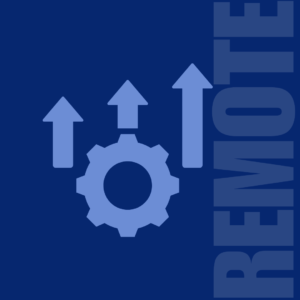
Systems Approach
The Systems Approach to Recruiting: Connecting People, Data and Process for Scalable Hiring Success
Traditional recruiting often feels like a relay race in which résumés pass from sourcer to recruiter to hiring manager with little feedback between checkpoints. When a candidate drops out, no one can pinpoint exactly where or why. A systems approach treats recruiting as an interconnected ecosystem, mapping every input, workflow and feedback loop so the organization hires faster, cheaper and with higher quality.
At the core of the systems mindset is end-to-end visibility. Each stage—talent attraction, screening, assessment, interviewing, offer and onboarding—generates data signals. Siloed teams may collect these signals, but they rarely synthesize them. A systems approach aggregates metrics in a central dashboard: job-board conversion rates, interview-to-offer ratios, new-hire retention, even ramp-up productivity. Patterns emerge that no single recruiter could see in isolation. If marketing spends heavily on a channel that yields interviews yet zero accepts, the dashboard flags the leak. Time-to-hire drops because every stakeholder can fix root causes instead of symptoms.
Systems recruiting also optimizes for flow efficiency rather than individual speed.
ATS may auto-schedule interviews in minutes, but if hiring managers cancel last-minute, candidate experience still suffers. The systems lens highlights bottlenecks through value-stream mapping borrowed from lean manufacturing. When the map shows five idle days between technical test and panel interview, the team redesigns scheduling ownership or automates reminders. One aerospace firm cut process idle time by forty-two percent using this technique, reducing overall cost per hire by eighteen percent in just two quarters.
Feedback loops transform the recruiting system from static to adaptive. Post-hire performance data filters back to sourcing algorithms so the next requisition targets profiles statistically linked to top performers. Exit interviews feed into cultural-fit questions for future candidates. The learning cycle never ends, mirroring DevOps in software: release, measure, iterate. In a recent case study, a SaaS company that integrated performance analytics into its ATS raised first-year retention from seventy-one to eighty-six percent, proving that systematic learning beats ad-hoc intuition.
Technology is the nervous system, not the cure-all
AI screening, video interviewing and chatbot scheduling act as accelerators only when plugged into a coherent process map. Without shared taxonomies for skills and competencies, algorithmic matching simply scales chaos. A systems approach establishes a universal language—often via competency libraries and structured scorecards—so tools exchange data seamlessly. The result is interoperability that enables richer analytics and easier compliance audits.
Human judgment remains the heartbeat of a recruiting system. Structured interviews and psychometric tests reduce bias, yet final decisions still rely on managerial discernment. The systems framework frees recruiters from repetitive tasks, allowing them to coach hiring teams on interview discipline and candidate experience. Paradoxically, automation makes the process more human by reallocating recruiter time to empathy-driven touchpoints.
Implementation demands cross-functional ownership
HR operations align metrics, finance validates head-count forecasts, IT secures integrations, and executives sponsor change management. Quarterly retrospectives mirror agile sprints, ensuring the system evolves with labor-market volatility and business strategy. Companies that embed systems thinking into talent acquisition gain a dynamic advantage: they can pivot hiring capacity up or down without degrading quality or brand reputation.
In an era of skills shortages and remote competition, the systems approach is no longer a luxury; it is the operating model for organizations that view talent as a compound asset. By unifying data streams, eliminating process waste and closing feedback loops, recruiting shifts from reactive scramble to proactive value creation. The right hires arrive when they are needed, in roles designed for impact, equipped with insights gleaned from every hire before them. That virtuous cycle is the hallmark of a true recruiting system—and the reason the companies that master it will define the future of work

The Future of Hiring: Technology, Empathy, and Data Converge Hiring in the next decade will be defined by intelligent automation paired with deeper
Fair Hiring Practices: Building Trust, Equity, and Long-Term Success Fair hiring practices are the cornerstone of a healthy workplace and a resilient
Applicant Tracking System (ATS): The Key to Streamlining Your Recruitment Process In the fast-paced world of recruitment, hiring the right talent
Online recruitment not easy today How to conduct an interview in online recruitment? What to ask a candidate to understand more truth? Have you
The Screening Interview: Key Questions to Assess a Candidate’s Potential The screening interview is one of the most critical steps in the hiring
The Role of Recruiters in Talent Acquisition Recruiters are essential to finding top talent, but their effectiveness depends on how well you share
